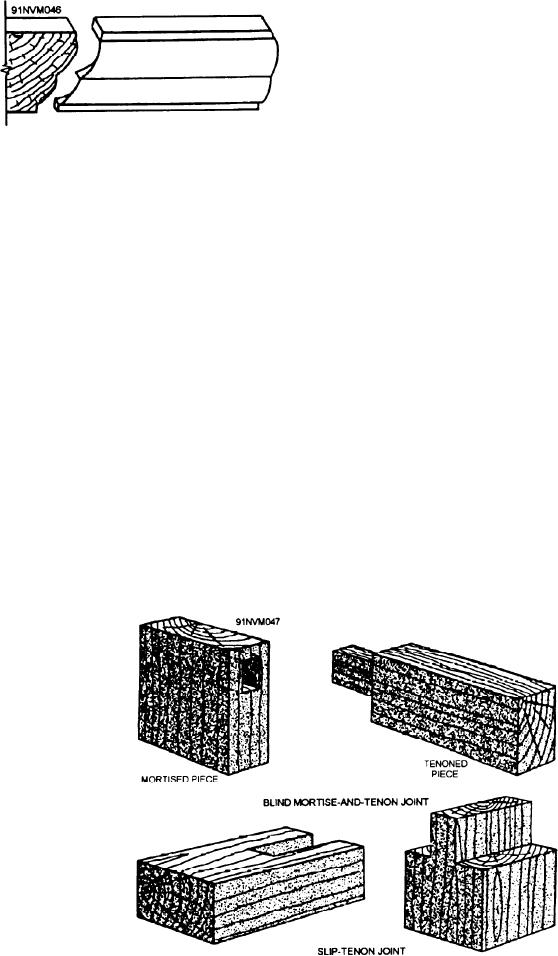edges and end of each member. This line will
extend from the shoulder line on one edge to the
shoulder line on the opposite edge (fig. 3-23). Be
sure to gauge the cheek line from the face of each
member. If you gauge from both faces, the faces
will be flush after cutting the joint. The faces must
be flush regardless of whether or not the gauge was
set to exactly one-half the thickness. Too much
waste cut from one member offsets a lesser cut from
Figure 3-20.--A coping joint.
the other.
If you gauge from the face of one member and
the back of the other, and the gauge is not set to
Half-Lap Joints
one-half the thickness, the faces will be out of flush
by the amount of the error. A rule you should use
For half-lap joints (fig. 3-23), the joining
for half-lap joints is to always gauge the cheek line
members are usually the same thickness. For the
from the face of the member.
end butt half lap, measure off the desired amount of
lap from the end of each member. At this point,
Next, make the shoulder cuts by sawing along
use a combination square to guide and to score a
the shoulder line down to the cheek line. Saw from
line all the way around the member. This is
the back of the lapping member and from the face
squaring a line. For the corner half lap, measure
of the lapped member (fig. 3-23). Clamp a piece of
off the width of a member from the end of each
wood along the starting groove to steady the saw.
member. Square a line all the way around. These
are shoulder lines.
The cheek cuts (sometimes called the side cuts)
are next. Cut them along the waste side of the
Next, you should select the best surface of each
cheek line. Clamp the member in the vise so it
member and place it facing up. This is the face of
leans diagonally away from you. With the member
the member. The opposite surface is the back.
in this position, you can see the end and the upper
Mark the face of each member plainly. Next, set
edge. When the saw reaches the shoulder line on
the marking gauge to one-half the thickness of the
member. Score a line (called the cheek line) on the
Figure 3-21.--Mortise-and-tongue and slip-tenon joints.
3-18






